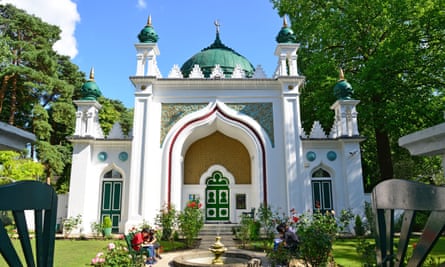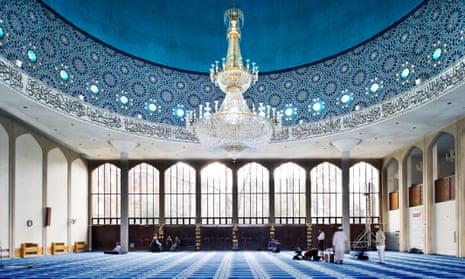A landmark London mosque has been given Grade II* listed status in recognition of its historic, cultural and architectural importance.
The London Central mosque in Regent’s Park was built in the 1970s, three decades after the acquisition of the site was authorised by Churchill’s war cabinet in recognition of the importance of Islam in an increasingly multicultural society.
A design by the British architect Sir Frederick Gibberd was chosen in an international competition. According to Historic England, which recommended the mosque for listing by the Department for Culture, Media and Sport (DCMS), “his elegant scheme combined architectural traditions of British modernism with historic Islamic forms”.
The mosque, which took two years to build at a cost of £6m, can hold several thousand worshippers in its grand prayer hall. Its golden dome and 44-metre minaret make it a London landmark.
The Fazl mosque in Southfields, south-west London, has been given Grade II listing. It was the first purpose-built mosque in London when inaugurated in October 1926 and cost £6,223. It is now the headquarters of the Ahmadiyya Muslim community.
The Guardian, which attended the opening ceremony, described it as “a graceful little building with a dome in concrete ... placed close to the District railway and in the midst of suburban villas. After the ceremony the imam called the faithful to prayer from the minarets high over the roofs of suburbia.
“It is built altogether with steel and concrete, and, unlike the eastern mosques, it has windows, as a concession to our climate … It is in its incongruous surroundings a thing of beauty.”

The DCMS has also upgraded the listing of two other mosques. The Shah Jahan in Woking, Surrey, England’s earliest purpose-built Muslim place of worship, has become the only Grade I listed mosque in the UK, upgraded from its previous Grade II* listing.
A mosque at 8 Brougham Terrace in Liverpool was promoted to Grade II* “in recognition of its significance in telling the story of the emergence of Islam in England”, said Historic England.
Established in a Georgian terraced house in 1889, “it is an example of Liverpool’s capacity to embrace different cultural and faith communities, as well as evidence of the social and cultural diversity that developed as a consequence of the city’s role as an internationally significant port and trading centre”.
Michael Ellis, the heritage minister, said:“By listing these beautiful mosques, we are not only preserving important places of worship, but also celebrating the rich heritage of Muslim communities in England.”
A guide to Islamic architecture in Britain, published this month by Historic England, charts the architectural and social history of Islamic places of worship. The British Mosque, by architect Shahed Saleem, analyses different types of mosques to illustrate the diversity of the UK’s Muslim population.
There are estimated to be almost 2,000 mosques and Islamic prayer rooms in the UK, serving 4.1 million Muslims, or 6.3% of the UK population.
